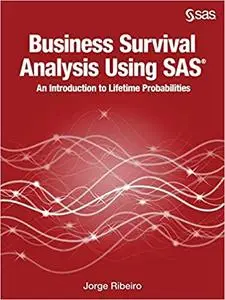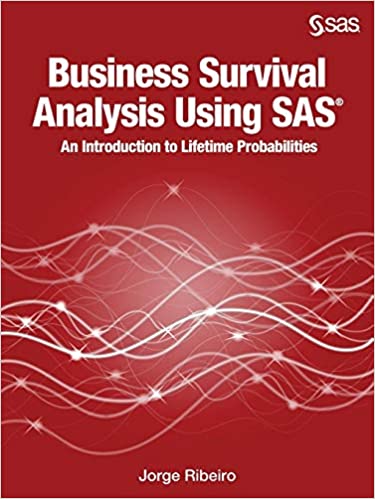Jorge Ribeiro, "Business Survival Analysis Using SAS: An Introduction to Lifetime Probabilities"
English | 2019 | ISBN: 1629604836, 1642955043 | 236 pages | EPUB | 30.5 MB
English | 2019 | ISBN: 1629604836, 1642955043 | 236 pages | EPUB | 30.5 MB
Solve business problems involving time-to-event and resulting probabilities by following the modeling tutorials in Business Survival Analysis Using SAS®: An Introduction to Lifetime Probabilities, the first book to be published in the field of business survival analysis! Survival analysis is a challenge. Books applying to health sciences exist, but nothing about survival applications for business has been available until now. Written for analysts, forecasters, econometricians, and modelers who work in marketing or credit risk and have little SAS modeling experience, Business Survival Analysis Using SAS® builds on a foundation of SAS code that works in any survival model and features numerous annotated graphs, coefficients, and statistics linked to real business situations and data sets. This guide also helps recent graduates who know the statistics but do not necessarily know how to apply them get up and running in their jobs. By example, it teaches the techniques while avoiding advanced theoretical underpinnings so that busy professionals can rapidly deliver a survival model to meet common business needs.
From first principles, this book teaches survival analysis by highlighting its relevance to business cases. A pragmatic introduction to survival analysis models, it leads you through business examples that contextualize and motivate the statistical methods and SAS coding. Specifically, it illustrates how to build a time-to-next-purchase survival model in SAS® Enterprise Miner™, and it relates each step to the underlying statistics and to Base SAS® and SAS/STAT® software. Following the many examples—from data preparation to validation to scoring new customers—you will learn to develop and apply survival analysis techniques to scenarios faced by companies in the financial services, insurance, telecommunication, and marketing industries, including the following scenarios:
Time-to-next-purchase for marketing
Employer turnover for human resources
Small business portfolio macroeconometric stress tests for banks
International Financial Reporting Standard (IFRS 9) lifetime probability of default for banks and building societies
"Churn," or attrition, models for the telecommunications and insurance industries



